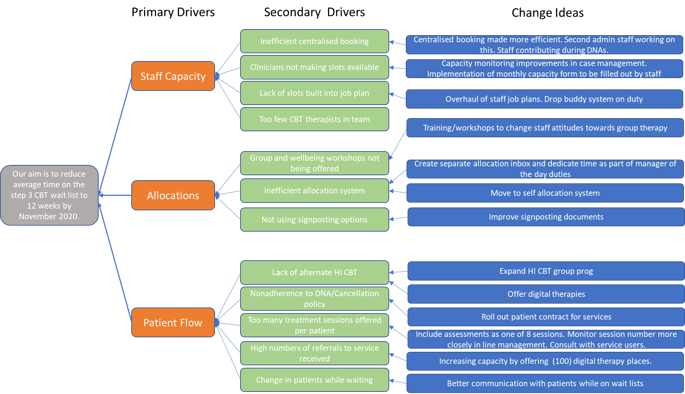
Driver Diagrams
A driver diagram can be used to plan quality improvement projects by systematically identifying different areas of the project in order to see all the elements involved in the project. This also helps your team see the different aspects and therefore may help with assigning tasks.There are 4 aspects to the driver diagram.
Aim
Describe what you are trying to achieve and how it is to be measured. Try to avoid ‘to improve/reduce’ without quantifying this. Use data to determine your project aims and what might be achievable. For example if you currently have 0% compliance with your project outcome then trying to achieve 100% may not be achievable. A well-written aim provides your outcome measure.
Primary Drivers
These are the big topics that you will need to work on, in order to achieve your aim. All key areas of the system should be included here and therefore will help you determine your process measures. These may include staffing, resource allocation, patient factors etc.
Secondary Drivers
Each Primary Driver may have Secondary Drivers. These are the areas that you would need to target to positively influence a Primary Driver. You may need to involve people who understand the Primary Driver to be able to identify the Secondary Drivers. Clearly identified Secondary Drivers will be able to help you identify clear change ideas.
Change Ideas
These are the ideas that you have which may lead to change in line with your overall aim. All change ideas should be directly related to a Secondary Driver to help achieve the aim. These can then be used as a deck from which you can pick the changes you wish to make. If you wish to prioritise the change ideas you could involve stakeholders to ask which would make the biggest impact on the aim?




